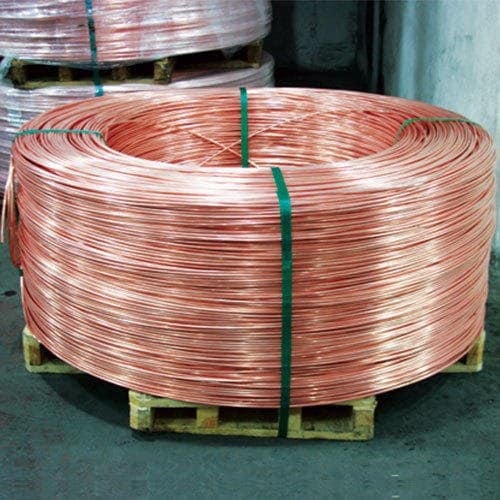Project Report For Copper Cable Manufacturing
Introduction
The project report for Copper Cable Manufacturing is as follows.
A copper cable is a collection of two or more copper wires that have been wrapped in a single jacket or sheath. Power generation, transmission, distribution, telecommunication, electronic circuitry, and a huge variety of electrical devices all use copper wire and cable.
In the manufacturing and electrical industries, braided tin-coated copper flexible connectors are now preferred over plain copper wire. A connector is an electromagnetic device that connects various circuits and interfaces and relies on mechanical level assembly for high performance. There are a few situations where it is desirable for the connector to be flexible so that it can survive the change because of various natural elements like thermal expansion and magnetic fields.
Project Report Sample Of
Copper Cable Manufacturing
Get Completely Custom Bankable Project Report
Made Process Of Copper Cable Manufactring
The electronic media sector uses a lot of copper cables and wires. Have you ever wondered what goes into making copper wires? Copper is a metal that is mostly used to create copper cables. To make copper wires, it must go through a number of processes.
Crushing, mining, and grinding of copper :- The process of making copper wire begins with the initial crushing and mining of the copper metal. The next stage is to grind the metal in the big machines so it can be made into metal. Copper is also recovered from it once the wasted material has been removed.
Turning into copper cathode :- The transformation of copper into a copper cathode involves a number of steps. A copper sulphate solution is created by leaching the oxide ores using a weak acidic solution. After electrowinning, the recycled copper is smelted and transformed into a different form. Pure copper ions are produced to electronically swing between anodes following the electrowinning and smelting processes. The resulting cathodes are made into wires.
Drawing :- To create wires of various gauges, copper is pulled. By using a variety of dyes, copper size is lowered during this procedure. The life of the dyes and chemicals used in the process are extended by the use of lubricants when drawing copper wire. To make the process of drawing copper wire more efficient, purchase premium lubricants from India’s top chemical producers. After drawing, copper wire becomes incredibly thin and bendable.

Heating :- The copper wire is placed in an electric furnace for softening after the drawing process. The furnace is heated to a maximum of 1000 degrees Fahrenheit. To stop oxidation, this process is carried out in water. During the process, the water cools and cleans the wire. The copper wire is softened through this technique.
Insulation :- In an insulator, numerous distinct wires are bundled together to form cables. Different synthetic materials are used to insulate these cables. Leakage of current is stopped by insulation. To improve protection, some cables might need additional components. Based on capacity and heat resistance, engineers evaluate the quality of insulation materials. Depending on the characteristics of the needed cables, they can employ a variety of insulation materials.
Twisting and braiding of the wires :- Please be aware that numerous wires are frequently stranded to generate more electrical performance and flexibility than a single wire. Some operators are used by manufacturers to complete this operation quickly.
Cabling :- The aforementioned actions assist in getting ready the cable’s essential part. One cable is made up of several assembled and jacketed wires. The procedure is carried out in a station cabin.
Market Potential Of Copper Cable Manufacturing
The market for copper wire and cable was estimated to be worth USD 158.9 billion in 2021 and is anticipated to reach USD 249.1 billion by 2030, with a CAGR of around 5.77% between 2022 and 2030.
Expenses

Product Cost Breakup

Reveneue Vs Expenses

Market Trend

The building and construction industry is expected to develop at one of its fastest rates in recent memory, which will assist the global market for copper wire and cable. The expansion of infrastructure development projects, rising population, rampant commercialization, and industrialization are some of the important reasons affecting the strong demand for copper cables and wires in the construction sector. The world population will surpass 9.5 billion people by the year 2050, up from 8 billion in 2022.
Due to the necessity for well-equipped residential areas to satisfy the demand for housing, this has prompted increasing activities that are currently being seen in the building sector. A startling number of skyscrapers are being built in several areas, including the US, Hong Kong, Japan, Singapore, and Canada, to name a few.
For instance, Mumbai, India, has more than 4,000 high-rise structures, including 200 skyscrapers. They were primarily constructed in the most recent ten years. Since copper offers both great corrosion resistance and strong electrical conductivity, copper wires and cables are crucial in the construction sector. Over copper surfaces, they create a durable protective oxide-sulfate patina covering.

